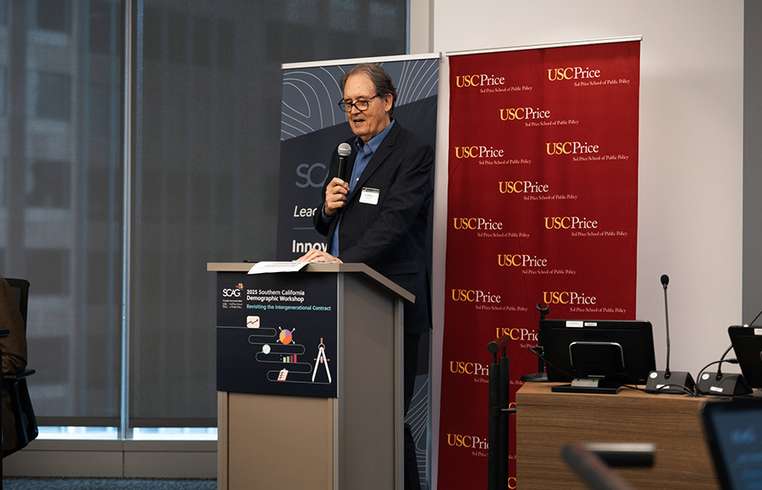
News - Why California’s shifting population trends require a new ‘social contract’
Business Strategy
Why California’s shifting population trends require a new ‘social contract’

California faces a shortage of young people needed to support its aging population, an urgent problem that requires investing in education and enacting policies to make life more affordable for young adults, USC Price School Professor Dowell Myers said in a speech this week. Myers, who spoke at a conference hosted by the Southern California Association of Governments, argued that a new intergenerational social contract is needed to address the state’s shifting demographic trends, including falling birth rates and reduced migration that lower the number of young people. Meanwhile, older residents age in place, creating a “top-heavy” age structure that will be twice as heavy in 2030 as it was 20 years ago, Myers said. “Millennials are the most supremely important group right now because they’re at the critical age when they do everything: they are the new workers, the new parents, the new taxpayers, the new voters, the new home buyers,” said Myers, who is director of the USC Price School’s Population Dynamics Research Group. “We’d better treat them right or we’re all going to suffer.” Myers, who gave the keynote address at SCAG’s Southern California Demographic Workshop, explained that social contracts outline how resources and services are exchanged between prime wage earners and members of less advantaged generations, typically elderly retirees or children requiring public investment in their nutrition and education. Population changes have forged a new demographic reality, one that requires the state to prioritize investing in children and retaining young adults, Myers argued. For example, California should ease housing development restrictions that were popularized in the 1980s when population was booming, Myers said. Previous projections estimated that California would top 50 million people by 2036. Now, the latest estimates from the Department of Finance say the state will barely reach 40 million. Easing those development restrictions could alleviate the state’s housing shortage, which is driving young people to move out of state to places where housing is more affordable, he added. “We still have restrictions in place to prevent runaway growth from earlier decades. But now we have a shortage of young people, and their scarcity means we shouldn’t neglect them,” Myers said. “Livability for young adults and children is critical to retaining them in California, because we really need these people for the future workforce and as taxpayers,” he added. Young people are also needed to buy homes from older adults. However, California’s top-heavy age structure creates a mismatch between the number of older adults who may soon want to sell their expensive homes and the number of young adults who can afford them. “Who is going to buy your house and what can they really afford?” Myers asked. “Every buyer needs a seller. Every seller needs a buyer. So it’s a partnership, actually, and we don’t treat it that way.” To do so, older people need to invest more in younger generations. Publicly funded child care to help working families, and increased opportunities for higher education will greatly help the younger generation. Older people also stand to benefit from that, Myers noted. “After all, younger people with higher levels of education can typically afford more expensive homes, and this is who we hope will be buying your house,” Myers said.






